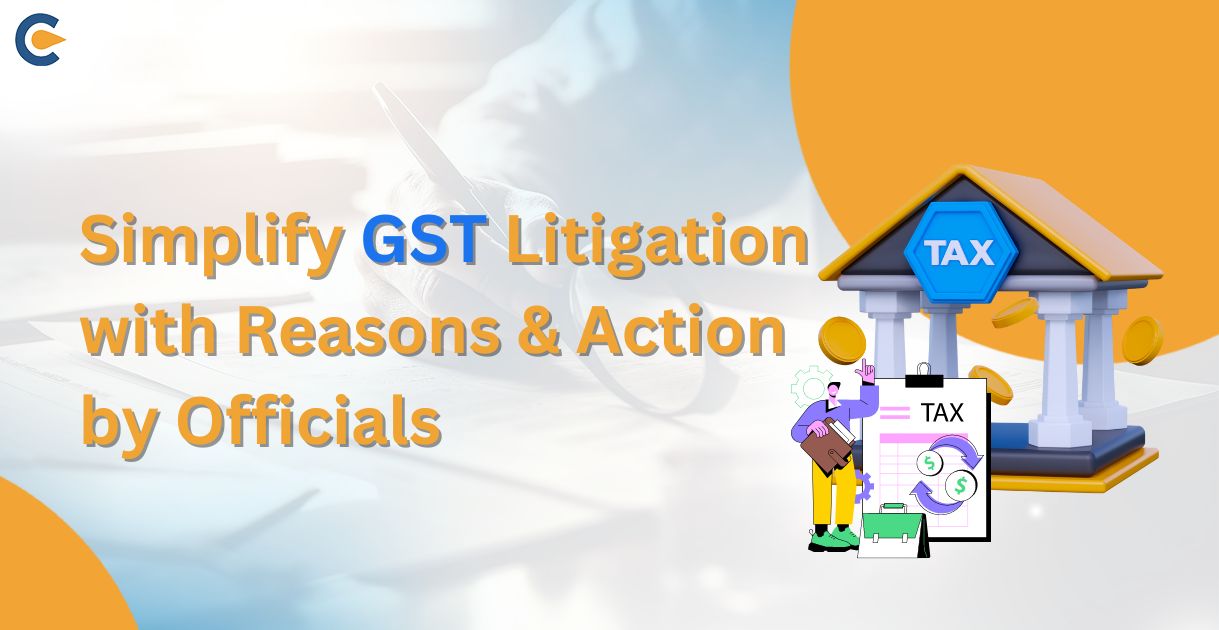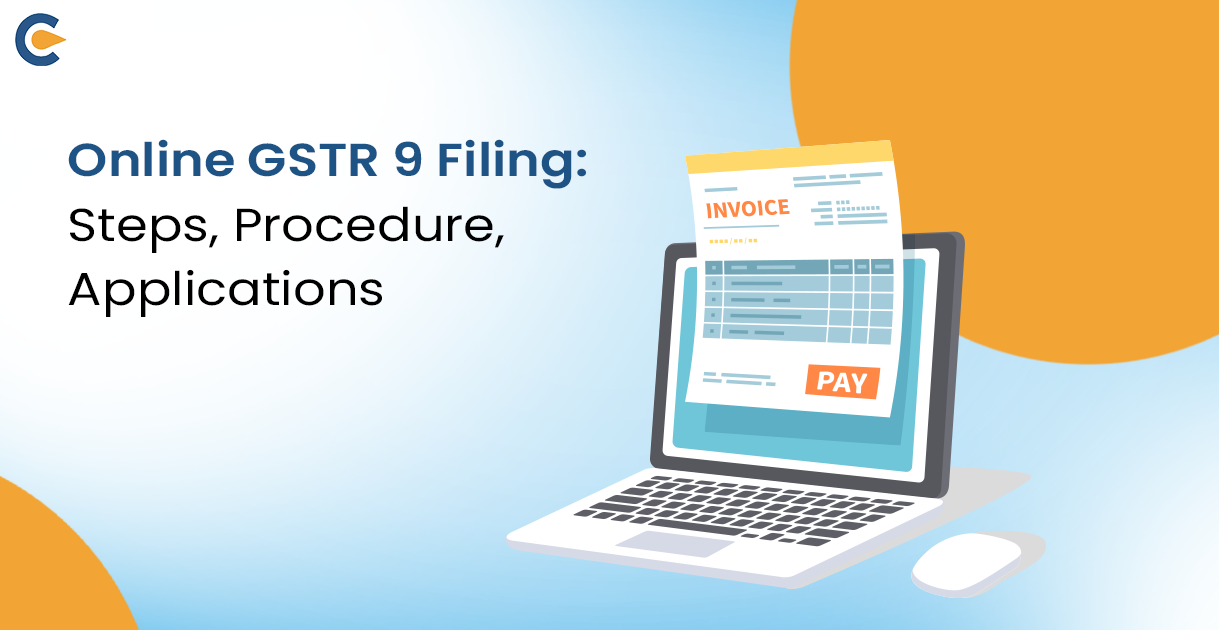In India’s goods and services supply, the Goods and Services Tax (GST) stands as the comprehensive indirect tax framework. Despite its implementation for more than five years, the domain of GST litigation is still nascent, and disputes are predicted to escalate as time progresses.
Anticipated legal challenges are expected to stem from various issues such as complexities with transition credits, instances of delayed or non-filing of GST returns, intricacies surrounding tax refunds, challenges linked to the intricacies of import and export levies, the structure of e-way bills, and several other areas within the GST framework.
In light of this evolving scenario, it becomes imperative to grasp the intricacies of GST litigation. As businesses navigate the complexities of GST regulations, understanding the potential legal challenges becomes essential for effective compliance and dispute resolution. This awareness is vital to ensure smooth operations and compliance with the evolving landscape of GST in India.
| Tax Litigation | |
| Direct Tax Litigation | Indirect Tax Litigation |
Tax litigation can be broadly categorized into two main types:
- Direct Tax Litigation
- Indirect Tax Litigation
In the context of GST, the litigation falls under the “Indirect Tax litigation” category within the country.
What is GST Litigation?
Litigation is formally defined as the legal process of bringing a case to and conducting proceedings in a court of law. GST litigation encompasses all legal disputes related to Goods and Services Tax, covering various aspects such as the transition of credits from the previous tax system, eligibility for input tax credit, denial of refund claims, and issues related to non or short payment of output tax liability.
In the context of GST, routine business activities like filing returns, claiming Input Tax Credit (ITC), and pursuing GST refunds may lead to potential litigation due to various complications that may arise. Taxpayers need to be aware of the risk of audits by tax authorities, during which their tax positions, payments, and compliances will be scrutinized. While audits are not intended to be cumbersome for taxpayers, they serve as a means to assess tax compliance. Penalties and interest implications may arise in cases of defaults identified during audits.
In the event of disagreements with audit outcomes or assessments, taxpayers have the option to appeal through an independent and unbiased mechanism. Given the dynamic nature of GST, businesses must understand the intricacies of departmental audits and GST litigation to defend their cases effectively. Handling litigations across multiple GSTINs or entities requires careful management to track actions, monitor preparedness and progress, and have comprehensive information and documents readily available. Additionally, staying updated with recent judicial precedents, notifications, and circulars is crucial for managing these litigations effectively.
Key Causes of GST Litigation
1. Retrospective Modifications in the GST Act:
Changes made to the GST Act with retrospective effects can create conflicts, as taxpayers may not have been aware of these modifications, leading to varying tax positions.
2. Pronouncement of Orders:
Disputes may arise from decisions made by high courts, apex authorities, and advanced ruling bodies on similar matters. Varied rulings, such as those regarding refunds from inverted tariff structures, can contribute to conflicts, but resolutions from supreme authorities can bring clarity.
3. Understanding of GST Law:
Varied interpretations of GST laws between taxpayers and tax authorities can cause confusion and conflicts, particularly in the application of GST to specific sales of goods and services.
4. GST Compliances Mismatch:
Inconsistencies between taxpayer returns and data held by tax authorities can initiate non-compliance proceedings, leading to conflicts between taxpayers and regulatory bodies.
The Process of GST Litigation Resolution
To effectively manage multiple ongoing litigations, businesses can follow the following streamlined process:
- Analysing the Notice or Show Cause Notice or Order:
Upon receipt of a Show Cause Notice or General Notice from the GST department, the business entity must thoroughly examine and analyse the content.
- Briefing the Company:
Prepare a comprehensive company brief and devise a strategy to address the notice. Develop a plan of action to ensure a robust defence for the company.
- Collating Required Information or Data or Reconciliations:
Gather all necessary pieces of evidence, data, relevant information, and essential documents to substantiate the company’s case before the officials.
- Validating and Verifying the Collected Information and Data:
After collecting data, validate and verify it to maintain accuracy and credibility.
- Drafting a Suitable Appeal or Reply after Thorough Research for Legal Precedence:
With all documentation and information in place, draft a well-researched and suitable reply or appeal. This document will serve as a response to the received notice.
- Submitting the Appeal Reply:
Ensure the timely submission of the prepared appeal or reply to the concerned department, adhering to procedural requirements.
- Appearance Before Commissioner, Adjudicating Authority, or Tribunal:
Participate in adjudication by presenting the case before the relevant Adjudicating Authority, Commissioner, or Tribunal to defend the company’s position.
Phases of GST Litigation
GST Audit & Assessment:
In the initial phase of GST litigation, tax authorities thoroughly audit the taxpayer’s provided information, scrutinising details such as returns, tax invoices, and relevant records. If discrepancies arise, a show-cause notice is issued under Section 73 for demands within the standard period and Section 74 for demands within the extended period.
Protest:
If the taxpayer disagrees with the assessment or audit findings, they have the option to register a formal objection with the tax authorities.
Adjudication:
If the objection remains unresolved, the case is referred to the adjudicating authority for a final decision. The adjudicating authority reviews the objections filed by the assessee before making a conclusive decision.
Appeal:
The taxpayer, dissatisfied with the adjudication outcome, retains the right to appeal to the appellate authority. This serves as a further step in the resolution process, allowing for a reevaluation of the case.
GST Litigation Deliberated Cases
Several deliberate cases occur between taxpayers and tax authorities, such as GST rate classification, ITC refusal, place of supply, anti-profiteering, return mismatch, tax refund, etc.
- Differences in Classification and GST Rates
The classification of goods and services and the applicable tax rate are two of the main topics of GST disputes. Due to the GST law’s extensive list of categories and rates, taxpayers frequently struggle to determine the appropriate supply classification and rate. The classification of certain commodities or services may give rise to disagreements, which may result in tax authorities sending notices and taxpayers contesting the letters.
2. Input Tax Credit Refusal
A key component of GST is the input tax credit (ITC), which enables taxpayers to offset their output tax obligation with the tax paid on inputs. However, tax authorities have been strict in determining whether ITC claims are eligible, which has resulted in conflicts and litigation. ITC denials frequently have legal ramifications because of things like non-compliance with paperwork requirements, disagreements over ITC on certain expenses, or discrepancies between invoices and returns.
3. Determining the Location of Supply in GST Matters
Given that GST is a destination-based tax, accurately pinpointing the location of the supply is crucial for determining tax obligations. However, disputes commonly arise when defining the place of supply, particularly in transactions spanning different states or jurisdictions. Varied interpretations between taxpayers and tax authorities can lead to legal conflicts concerning the correct location of the supply and the associated tax responsibilities.
4. Analysis of Anti-profiteering Activities
In order to ensure that businesses pass on the benefits of tax rate reductions or input tax credits to consumers, the GST law incorporates an anti-profiteering provision. Anti-profiteering assessments investigate whether companies have reduced prices to pass on GST benefits. Disagreements arise when there are differences between firms and tax authorities regarding the magnitude of the price reduction or the methodology used to determine compliance, ultimately leading to litigation.
5. Transitional Credit Disputes:
Businesses transitioning to the GST system encountered challenges in claiming transitional credit for taxes paid under the old indirect tax regime. Disagreements regarding eligibility, calculation, and utilisation of transitional credit have led to legal disputes between taxpayers and tax authorities.
6. Mismatch Between GSTR-2A/2B and GSTR-3B for ITC Claims:
The requirement for businesses to file separate returns, GSTR-2A and GSTR-3B, has given rise to persistent issues. The procedural challenges, specifically the mismatch between GSTR-2A/2B and GSTR-3B, have become central to the most deliberated cases in the current landscape of GST litigation.
Businesses ‘ discrepancies in claimed Input Tax Credit (ITC) often stem from mismatches between GSTR-2A and GSTR-3B. This misalignment may result in tax liabilities or losses, particularly when the claimed ITC in GSTR-3B surpasses the eligible credit available in GSTR-2A. Tax authorities closely monitor these discrepancies, subjecting them to scrutiny and audits, potentially leading to fines or heightened corporate compliance requirements.
7. Legal Challenges in GST E-way Bill Compliance
- Non-Generation Issues: The requirement for Electronic Way (e-way) Bills in the GST system is essential for tracking the movement of goods. However, non-compliance has led to legal challenges, mainly when discrepancies like inaccuracies or omissions occur in e-way invoices.
- Supporting Accuracy Claims: Businesses often need to validate the accuracy of e-way bill details in disputes. Upon identifying irregularities, tax authorities can seize goods in transit, leading to legal conflicts as taxpayers contest seizures.
- Technical Hurdles and Legal Impacts: Technical challenges and intermittent system outages in the GST e-way bill system have resulted in disruptions. Legal actions are taken when genuine attempts to generate e-way invoices fail due to technological difficulties.
8. Challenges in GST Refund Procedures
With its intricate steps and adherence to rules and deadlines, the GST refund process poses challenges for businesses. Minor procedural errors can lead to rejections and delays, extending the legal process. Constant updates in GST laws contribute to misunderstandings and conflicts between taxpayers and tax authorities. Verification procedures by tax authorities, while crucial for claim accuracy, introduce subjectivity, leading to potential legal disputes. Swift refund processing is essential for maintaining healthy cash flow, but recurring delays have become a persistent issue, incurring financial costs and increasing the likelihood of legal action.
9. Cross Charge Processes and ISD Mechanisms in GST
Since its implementation in 2017, India’s Goods and Services Tax (GST) has been a continuous subject of discussion and legal disputes. Conflicts related to cross-charge mechanisms and the Input Service Distributor (ISD) system have been notable sources of contention among the various challenges. A central issue in cross-charge litigation revolves around determining which expenses qualify as common and eligible for distribution of Input Tax Credit (ITC).
The classification of expenses, whether directly attributable to specific units or as common and shared across all units, often sparks disagreements. Concerns raised by tax authorities about ISD-driven ITC distribution, citing erroneous allocation or non-compliance with established rules, result in litigation. These disputes commonly focus on the quantity of ITC distributed, the methodology used for allocation, and the sufficiency of supporting documentation.
10. Challenges in Classifying Intermediary Services under GST
Under the GST framework, services are classified and subject to various tax rates based on their nature. Intermediary services, encompassing categories like commission agent, agency, or brokerage services, often lead to disputes over their precise classification. Determining whether a service qualifies as an intermediary service or falls under another category becomes a key issue in GST lawsuits.
The classification intricacies are crucial as they impact applicable tax rates and compliance requirements. Disagreements arise when taxpayers challenge tax authorities’ designations, arguing that the service belongs to a category with a lower tax rate. This discrepancy in classification can lead to legal actions and disputes between taxpayers and tax authorities.
GST litigation has become commonplace due to the inherent complexity of the tax regime. Emerging trends contributing to litigation include disputes over classification and rates, denial of Input Tax Credit, determinations of the place of supply, anti-profiteering investigations, and challenges with transitional credit.
To avoid litigation, businesses must ensure full compliance, maintain accurate records, and seek expert guidance to understand GST nuances. As the GST system evolves, staying informed and proactive in handling obligations is crucial. The absence of a GST tribunal has left numerous legal issues unresolved, prompting assesses to turn to High courts for relief from incorrect orders by the first appellate authority.
Without a national advance ruling authority, taxpayers seek relief through advance judgments, resulting in conflicting perspectives. Implementing amnesty schemes, similar to the Sabka Vishwas Legacy dispute resolution scheme, could alleviate burdens for both tax authorities and taxpayers. These schemes can help resolve ongoing legal disputes, facilitate quick tax collection, and allow the GST Council to focus on establishing the GST Tribunal, improving the advanced ruling procedure, and reinstating amnesty schemes to streamline tax litigations and enhance tax revenue.
Conclusion
The complexity of GST regulations has given rise to various legal challenges, with disputes revolving around issues such as intermediary service classifications, cross-charge processes, and the Input Service Distributor (ISD) mechanism. As businesses grapple with these intricacies, ensuring full compliance, maintaining accurate records, and seeking expert guidance becomes imperative. Emerging trends in GST litigation underscore the importance of staying informed and proactive. Addressing unresolved legal issues, establishing a GST Tribunal, and considering amnesty schemes could contribute to streamlining tax litigations and fostering a more efficient GST system.
Frequently Asked Questions (FAQs)
GST litigation refers to legal disputes arising from issues related to the Goods and Services Tax (GST) framework, involving disagreements between taxpayers and tax authorities.
Common reasons include disputes over classification and rates, denial of Input Tax Credit, place of supply determinations, anti-profiteering investigations, and challenges with transitional credit.
Intermediary service classification is crucial as it impacts tax rates and compliance requirements. Disputes often arise over whether a service qualifies as an intermediary service or falls under another category.
The ISD mechanism, responsible for distributing Input Tax Credit (ITC), can lead to disputes when tax authorities express concerns about erroneous allocation or non-compliance with established rules.
To avoid litigation, businesses should ensure full compliance, maintain accurate records, and seek expert guidance to understand the nuances of GST. Staying informed and proactive in handling GST obligations is crucial.
Emerging trends include disputes over classification and rates, denial of Input Tax Credit, place of supply determinations, anti-profiteering investigations, and challenges with transitional credit.
The absence of a GST tribunal has left numerous legal issues unresolved, prompting assesses to turn to High courts for relief from incorrect orders by the first appellate authority.
Taxpayers seek relief through advance judgments without a national advance ruling authority, leading to conflicting perspectives and potential legal disputes.
Similar to the Sabka Vishwas Legacy dispute resolution scheme, Amnesty schemes could alleviate burdens for tax authorities and taxpayers. These schemes can help resolve ongoing legal disputes, facilitate quick tax collection, and streamline tax litigations.
Businesses should focus on maintaining compliance, keeping accurate records, seeking professional guidance, and staying informed amid evolving GST regulations to navigate potential legal challenges successfully.
Read Our Article: Valuation Rule For Supply Under Goods And Services Tax










